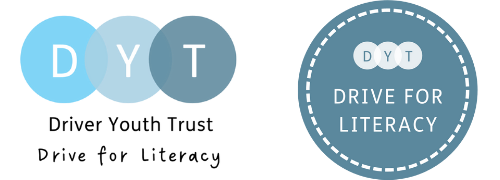“8 out of 10 pupils with a SEND are sitting in mainstream classrooms around the country.”
21/2/2018

I use this statistic with increasing frequency. (Well, to be honest, I’ve said 9 out of 10 but it’s more accurate – see below – to say 8 out of 10 which is still a significant number). Why? Because as our Through the Looking Glass report showed very clearly, everyone seems to think that ‘those children’ with a SEND either aren’t in our education system or if they are, they are someone else’s problem. Disability to most people is something very apparent, like someone who is blind or in a wheelchair, whereas disability takes all manner of forms and is often invisible, like dyslexia.
Politicians, think tanks, literacy charities who talk about ‘the love of reading’ endlessly (see what we have to say on this on pages 22/23 of the report!), those that train teachers and indeed, teachers themselves need to start by understanding that those with a SEND are not ‘out there somewhere’ but are in our classrooms and until we address this issue we will never achieve the literacy success so many aim for, and, more importantly, the full potential of all our pupils to access the curriculum, to learn and to show us their thoughts – whether by reading and writing or otherwise.
For those of you interested in numbers and statistics, here they are+.
- The number of pupils with special educational needs (SEN) is 1,244,255 (January 2017) 14.4%
- 242,185 pupils have a statement of SEN or an Education, Health and Care (EHC) plan – that’s 2.8% of all pupils.
-
- A further 1,002,070 pupils are on SEN support. This is equal to 11.6% of the total pupil population and remains unchanged since January 2016.
- SEN support* = support that schools provide to support SEND pupils, usually covered in a school’s SEND Information Report. More details here: https://www.gov.uk/children-with-special-educational-needs/special-educational-needs-support SEN support replaced ‘School action’ and ‘School Action +’, following the reforms of 2014.
- An EHC plan = the Education, Health and social Care support that is to be provided to a child or young person who has Special Educational Needs (SEN) or a disability. It is drawn up by the local authority after an EHC needs assessment of the child or young person has determined that an EHC plan is necessary, and after consultation with relevant partner agencies i.e. a pupil with more severe needs.
* SEN support is an interesting figure as it’s determined by schools. In my experience schools that are struggling and vulnerable do not have the capacity to deal with all pupils with SEN, so they focus on the most severe cases, often missing for example those struggling with literacy because of dyslexia who may be on the register in other, more stable schools. The point is, these figures may be an under estimate.
With regard to types of school attended by those with SEN:
- Nursery = 5,990
- State funded primary = 633,105 out of a total of 4,689,660
- % of SEND pupil 13.5% (633,105)
- % of pupils with SEND and EHC plans who go = 1.3% (62,390)
- % of pupils with SEND without EHC who go to = 12.2% (570,715)
- State funded secondary = 399,005 out of total of 3,223,090
- % of SEND pupils who go to = 12.4% (399,005)
- % of pupils with SEND and EHC plan who go to = 1.7% (53,865)
- % of pupils with SEND without EHC plan who go to = 10.7% (345,140)
- PRUs = 12,085
- % of SEN pupils at PRU’s = 77.1% – what does that tell us about who is being excluded from schools?! We have recommended to the Education Committee that all excluded pupils should have an assessment of their needs.
- Independent = 81,275
- % of SEN pupils = 13.9%
- Maintained Special = 109,050
- Non-maintained special = 3,740
So in terms of 8 in 10 stat:
- Take away the 5,990 who go to nursery and total SEN pupils = 1,238,265
- Combine number of SEN pupils at state funded primary and secondary schools = 1,032,110
As a %, those pupils with a SEN, sitting in mainstream state primary and secondary schools = 83.35%.
So, I was wrong! It’s more than 8 out of 10, it’s nearer to 5 out of 6 pupils with Special Educational Needs are sitting in mainstream classrooms. This is why DYT’s focus is on children with SEND, who are educated in mainstream schools. Our flagship programme, Drive for Literacy, builds teacher capability and school capacity to identify and support children who struggle with reading, writing, speaking and listening. At present the programme is subsidised by Driver Youth Trust and schools pay a reduced cost to receive nine consultancy days and six CPD workshops, which are tailored specifically for the school’s literacy and SEND needs.
+ Reference: Department for Education (2017) Special educational needs in England: January 2017 https://www.gov.uk/government/statistics/special-educational-needs-in-england-january-2017 Table 1: All Schools: Number of pupils with SEN by school type and type of provision
NOTE: DfE refer to SEN, not SEND, even though their figures include the ‘D’, ie those with a disability.

